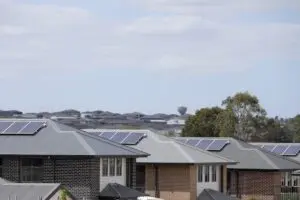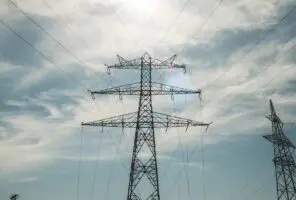The Andrew Forrest owned renewable developer Windlab has shrunk its proposed Upper Burdekin wind farm from 600 megawatts (MW) to 400MW, but its own report indicates the smaller footprint will still create “unavoidable” consequences for several threatened and endangered species.
The public environmental report shows the development is likely to harm Sharman’s rock-wallaby, koala, northern greater glider and red goshawk which live on the site.
The report predicts the wind farm will result in the removal of 662 hectares (ha) of Sharman’s rock wallaby habitat, 746 ha of koala habitat, 709 ha of northern greater glider habitat, and 754 ha of red goshawk habitat, within a 769 ha area.
The report also said habitat critical to the survival of these animals will be available in the project area, and plans to use biodiversity offsets to compensate for the unavoidable consequences the wind farm will have on the species.

Windlab reduced the size of the development after being referred under the Commonwealth Environment Protection and Biodiversity Conservation (EPBC) Act in 2021.
The project is a controlled action under the EPBC Act and is currently under assessment by the federal government.
The Act gives the government power of veto – or approval – of the project, according to an assessment of its impact and ability to deliver a “net positive outcome” for biodiversity over the longer term.
Despite the property itself being cattle grazing land, it is 4.8km from the Wet Tropics world heritage area, next door to the Lannercost State Forest and about 650m from the Girringun National Park.
Federal governments do have form in rejecting renewables projects that impact too heavily on the local flora and fauna.
In 2020, the Lotus Creek project in central Queensland was rejected under the Act for its potential impact on koala habitat. That project was later approved in November 2022 after owner Ark Energy submitted a much smaller design.
Shrinking wind farms
To get the project over the regulatory line, Windlab reduced the size of the development from 136 turbines with a capacity of 600-950 MW, to 80 turbines with a 400 MW capacity.
The development will cover a slightly reduced area of 769 ha but still retain the original turbine proportion of a maximum hub height of 200m and 150km of roads.
“We are developing the Upper Burdekin Wind Farm in a way that supports overall improved outcomes for regional ecology,” a Windlab spokesperson told RenewEconomy.
“Following more than two years’ in-depth environmental studies and consultation, we have delivered a project design that preserves more than 98 per cent of native vegetation on the cattle property where the project is located.
“We will deliver robust management plans to protect and maintain native species present across the project area, and reduce weeds and predatory pests that pose a major threat to these species.”
Scaling back wind farms to get them across the line in Queensland has precedence: Korea Zinc-owned Ark Energy slashed the size of its proposed Tablelands wind farm to avoid sensitive ecological and cultural heritage sites, cutting 114 of the original 200 proposed turbines.
That project, Chalumbin, was also the subject of concerns due to its proximity to national parks that form part of the Wet Tropics of Queensland World Heritage Area.
The reduced number of turbines will still have a maximum generation capacity of 602 MW, which is slightly higher than originally planned, due to being sized between 5 MW and 7 MW each.
A swathe of wind farms
Firming up proposals, striking agreements with traditional owners and even receiving planning approval does not guarantee a project will go ahead, but Windlab and its Upper Burdekin project already have some strong backers behind them.
Windlab counts iron ore billionaire Andrew Forrest’s Squadron Energy among its owners, after the billionaire used his 75 per cent shareholding to back a takeover by Federation Asset Management in 2020.
And in mid-2022 it struck a deal to sell 500 gigawatt hours (GWh) of electricity a year to Apple, with an anticipated start date of around 2026.
The same cannot be said of three of the other five wind farms in the area: Chalumbin, Upper Burdekin, Mt Fox and High Road and Kaban.
The Mt Fox wind farm is 15 km from Windlab’s proposed site and has also been referred under the EPBC, along with Chalumbin which is 115km away.
Some 140km away are Windy Hill, which is operational, and Kaban which is under construction. High Road is 150km away but hasn’t moved forward in the planning process.
The large number of wind farm proposals along the hinterlands of Queensland’s northern coast is concerning environmentalists, who say the price of the state’s renewable energy zones (REZ) is the potential existence of many threatened species.
Advocates such as the charity Rainforest Reserves Australia are worried that critical native bush and animal habitats are being destroyed by the state’s encouragement of wind and solar clusters in the REZs.
See also: Giant wind farm appeals order for turbine shutdowns as opponents fight approval
and “Not climate justice” Greta Thunberg joins call to tear down two huge Norway wind farms










